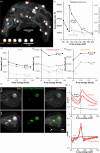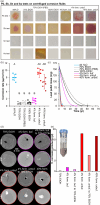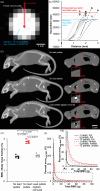The curious case of the Dana platypus and what it can teach us about how lead shotgun pellets behave in fluid preserved museum specimens and may limit their scientific value
- PMID: 39423188
- PMCID: PMC11488718
- DOI: 10.1371/journal.pone.0309845
The curious case of the Dana platypus and what it can teach us about how lead shotgun pellets behave in fluid preserved museum specimens and may limit their scientific value
Abstract
Fluid preserved animal specimens in the collections of natural history museums constitute an invaluable archive of past and present animal diversity. Well-preserved specimens have a shelf-life spanning centuries and are widely used for e.g. anatomical, taxonomical and genetic studies. The way specimens were collected depended on the type of animal and the historical setting. As many small mammals and birds were historically collected by shooting, large quantities of heavy metal residues, primarily lead, may have been introduced into the sample in the form of lead shot pellets. Over time, these pellets may react with tissue fluids and/or the fixation and preservation agents and corrode into lead salts. As these chemicals are toxic, they could constitute a health issue to collection staff. Additionally, heavy element chemicals interfere with several imaging technologies increasingly used for non-invasive studies, and may confound anatomical and pathological investigations on affected specimens. Here we present a case-study based on platypus (Ornithorhynchus anatinus) and other small mammals containing lead pellets from the collection of The Natural History Museum of Denmark.
Copyright: © 2024 Lauridsen et al. This is an open access article distributed under the terms of the Creative Commons Attribution License, which permits unrestricted use, distribution, and reproduction in any medium, provided the original author and source are credited.
Conflict of interest statement
I have read the journal’s policy and the author Michiel Krols of this manuscript has the following competing interests: Employed at TESCAN XRE, a manufacture of one of the micro-CT systems used in the study (UniTOM XL Spectral). The remaining authors have declared that no competing interests exist. This does not alter our adherence to PLOS ONE policies on sharing data and materials
Figures








References
-
- Birch, T. (1968). The history of the Royal Society of London for improving of natural knowledge from its first rise. Vol. 1. New York: Johnson reprint corporation. [Reprint of the 1756–1757 edition published for the Royal Society of London by A. Millar, London].
-
- Cole F.J. (1944). A history of comparative anatomy from Aristotle to the Eighteenth century. London: MacMillan.
-
- Simmons, J.E. (2014). Fluid preservation: A comprehensive reference. Lanham (MD, USA): Rowman & Littlefield.
-
- Blum F. (1893. a). Der formaldehyd als antisepticum. Münchener Medicinische Wochenschrift 40, 601–602.
-
- Blum F. (1893. b). Der formaldehyde als härtungsmittel. Zeitschrift der Wissenschaft für Mikroskopie 10, 314–315.
MeSH terms
Substances
LinkOut - more resources
Full Text Sources
Research Materials
Miscellaneous

